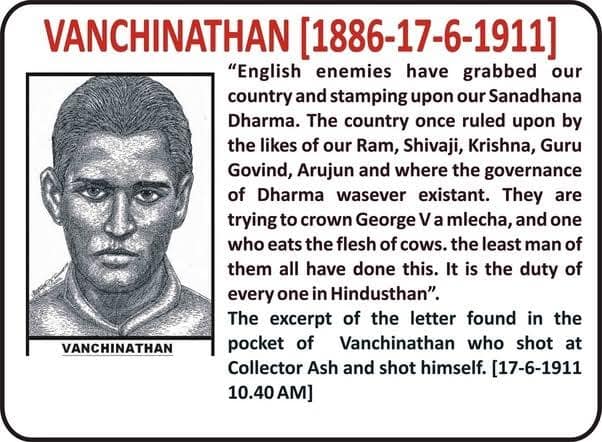
Belated tributes for an Unhonoured, Never Remembered Freedom Fighter, an Exemplary Scientist, an Extraordinary Inventor SATISH CHANDRA DASGUPTA.
Satish was born on June 14, 1880, in Kurigram (now a part of Bangladesh) in Rangpur district of Bengal. He belonged to a poor family,

Satish was born on June 14, 1880, in Kurigram (now a part of Bangladesh) in Rangpur district of Bengal. He belonged to a poor family,


yet due to his hard work and dedication, he was awarded a Master’s degree in chemistry from Presidency College, Calcutta.
The Bengal Chemical Works laboratory was used by chemistry students to carry out practicals. Satish Chandra’s work in the laboratory was closely watched
The Bengal Chemical Works laboratory was used by chemistry students to carry out practicals. Satish Chandra’s work in the laboratory was closely watched
by Acharya P.C. Roy, who got him a job in the Bengal Chemical Works factory as factory superintendent. Satish was determined to take the organisation to great heights. He developed medicinal products such as strychnine and caffeine from indigenous raw material. He knew that the
tree nux vomica grew only in India. He worked out a process to produce the much-in-demand strychnine from nux vomica. The supply was large enough to meet the demand of the domestic market and was also exported. (Till then, the herb used to be taken to England and the product
sold at a high profit in India).
Similarly, after much hard work done by Satish Chandra, Bengal Chemical Works began the production of caffeine, a medicinal product in great demand.
Satish was a versatile personality. He could work in the laboratory, in the factory,
Similarly, after much hard work done by Satish Chandra, Bengal Chemical Works began the production of caffeine, a medicinal product in great demand.
Satish was a versatile personality. He could work in the laboratory, in the factory,
and even do the carpentry with immense ability.
In 1910, the organisation had to install fire extinguishers for the safety of the factory and its workers. The sole supplier of the extinguishers was a British firm and the prices were extremely high. Satish felt that the
In 1910, the organisation had to install fire extinguishers for the safety of the factory and its workers. The sole supplier of the extinguishers was a British firm and the prices were extremely high. Satish felt that the
expenditure involved would be unaffordable. He bought only one extinguisher, opened it up, studied it very carefully and designed a new and a much superior one. It cost one-fourth of the price charged by the British firm. The new design was called Fire King. The company sold it
making hundred per cent profit, yet it cost the buyers half of what the British firm charged. As an incentive, the founder P.C. Roy shared half the profit with Satish Chandra and the latter got Rs 2 lakh for Fire King.
Soon after this Satish Chandra was influenced by MKGandhi
Soon after this Satish Chandra was influenced by MKGandhi
and responded to his call, asking young patriots to join him in national service. Despite the requests made by directors of the Bengal Chemicals, begging Satish not to leave them, he quietly left one night.
On joining the national movement, Satish Chandra donated his entire
On joining the national movement, Satish Chandra donated his entire
savings, which amounted to several lakh rupees, and got down to serving the nation. He was given the charge of the Wardha Institute for Research in Village Industries. He improved the charkha’s working, designed a cheaper and a simpler ghani (a simple oil crushing machine) with
a higher efficiency. He also found more profitable ways of making paper from bamboo pulp. This brought higher profits to the farmers.
After India got Independence, Satish Chandra was offered posts of high offices, but he preferred to work at Khadi Pratisthan at Sodepur, on the
After India got Independence, Satish Chandra was offered posts of high offices, but he preferred to work at Khadi Pratisthan at Sodepur, on the
outskirts of Calcutta. He improved the mustard seed crusher, found a more economical way of manufacturing palm gur and twisted jute yarn.
In 1965, at the age of 86 years, Satish began soil research. Various areas of West Bengal were affected by drought. Satish Chandra found
In 1965, at the age of 86 years, Satish began soil research. Various areas of West Bengal were affected by drought. Satish Chandra found
ways of increasing the water retention capacity of laterite soil tapping ground water resources and raising good crops on fallow land. He revived the art of making hand-made paper. He carried out a project of making safety matches from bamboo sticks. He also wrote some books
which include "Cow in India" and "Home and Village Doctor".
"Fountain Pen Ink" is a popular book which gives an account of how he invented Sulekha ink to help a boy start his own industry. Satish Chandra’s helpful attitude, scientific bent of mind and complete dedication made

"Fountain Pen Ink" is a popular book which gives an account of how he invented Sulekha ink to help a boy start his own industry. Satish Chandra’s helpful attitude, scientific bent of mind and complete dedication made


him a much honoured and loved citizen.
The versatile yet unsung hero of Bharat joined his mother’s feet on December 24, 1979. He was 99 then.
#ForgottenHeroes
#VANDEMATARAM

The versatile yet unsung hero of Bharat joined his mother’s feet on December 24, 1979. He was 99 then.
#ForgottenHeroes
#VANDEMATARAM


• • •
Missing some Tweet in this thread? You can try to
force a refresh
















